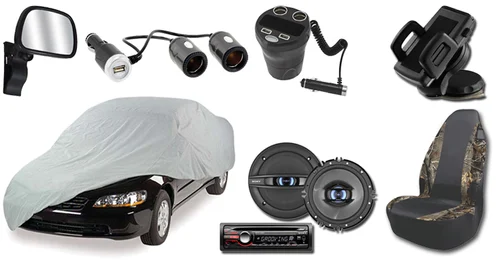Title: Decoding Car Insurance Rates for Young Drivers: Understanding the Influencing Factors
Introduction:
Car insurance rates for young drivers can be dauntingly high, often leaving them wondering why they’re paying so much. However, understanding the factors that influence these rates can help young drivers make informed decisions and potentially save money on their premiums. In this comprehensive guide, we delve into the various factors that impact car insurance rates for young drivers, exploring everything from demographics and driving habits to vehicle choices and geographic location. By gaining insights into these influencing factors, young drivers can navigate the car insurance market with confidence and clarity.
Chapter 1: Demographic Factors
1.1 Age: Exploring the Impact of Youthful Inexperience 1.2 Gender: Debunking the Myth of Male vs. Female Rates 1.3 Marital Status: Understanding the Marriage Discount
Chapter 2: Driving History and Record
2.1 Traffic Violations: The Consequences of Speeding Tickets and Moving Violations 2.2 Accidents: The Long-Term Effects of At-Fault Accidents 2.3 DUI/DWI Offenses: Navigating the Impact of Impaired Driving Charges
Chapter 3: Vehicle Characteristics
3.1 Vehicle Type: The Influence of Car Model and Make 3.2 Safety Features: Leveraging Technology for Lower Rates 3.3 Age and Mileage: Assessing the Impact of Older Vehicles
Chapter 4: Geographic Location
4.1 Urban vs. Rural Areas: Understanding the Urban Penalty 4.2 State Insurance Laws: Navigating Varying Regulatory Environments 4.3 ZIP Code Factors: Exploring Neighborhood Risks and Premium Variations
Chapter 5: Policy Choices and Coverage Limits
5.1 Coverage Levels: Balancing Comprehensive Protection with Affordability 5.2 Deductibles: Adjusting Out-of-Pocket Costs for Lower Premiums 5.3 Additional Coverage Options: Exploring Add-Ons and Enhancements
Chapter 6: Credit Score and Financial History
6.1 Credit-Based Insurance Scores: Unraveling the Link between Credit and Rates 6.2 Financial Responsibility: Demonstrating Stability for Lower Premiums 6.3 Student Discounts: Leveraging Academic Achievements for Savings
Chapter 7: Driving Habits and Usage Patterns
7.1 Mileage: Understanding the Impact of Annual Driving Distance 7.2 Commuting Habits: Exploring the Daily Commute Penalty 7.3 Usage-Based Insurance: Embracing Telematics for Personalized Rates
Chapter 8: Parentaunl Involvement and Policy Bdling
8.1 Parental Involvement: Leveraging Parental Policies and Multi-Vehicle Discounts 8.2 Bundling Policies: Maximizing Savings through Home and Auto Bundling 8.3 Named Driver vs. Primary Driver: Understanding Policy Structures and Implications
Chapter 9: Discounts and Savings Opportunities
9.1 Good Student Discounts: Rewarding Academic Excellence 9.2 Driver Training Discounts: Investing in Safe Driving Education 9.3 Defensive Driving Courses: Demonstrating Responsible Behavior for Lower Rates
Chapter 10: Future Considerations and Emerging Trends
10.1 Autonomous Vehicles: Exploring the Impact of Self-Driving Cars on Insurance 10.2 Usage-Based Insurance Innovations: The Future of Personalized Pricing 10.3 Green Car Insurance: Promoting Eco-Friendly Driving Habits for Discounts
